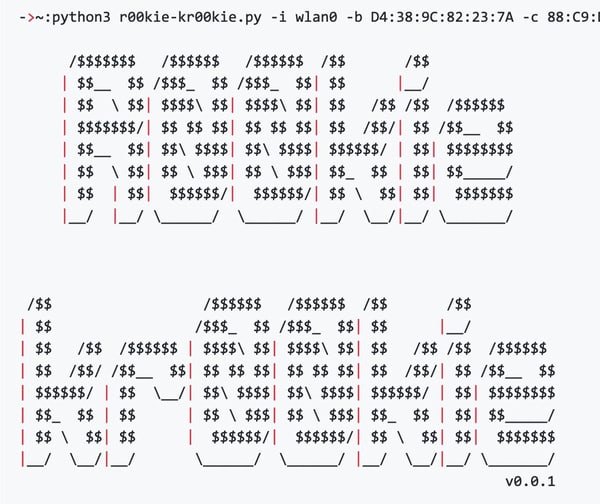Have you patched your IoT devices against the KrØØk Wi-Fi chip flaw

Last month security researchers took to the stage of the RSA Conference in San Francisco to reveal details of a previous unknown security flaw in the Wi-Fi chips built into more than one billion devices.
The KrØØk vulnerability (also known as CVE-2019-15126) exists in certain Broadcom and Cypress Wi-Fi chipsets and allows unauthorized decryption of some WPA2-encrypted traffic by causing vulnerable devices to use an easy-to-decrypt all-zero encryption key.
Unpatched IoT gadgets, smartphones, tablets, laptops, Wi-Fi access points and routers with Broadcom chips are all at risk from the KrØØk vulnerability, which is related to the KRACK flaw in the WPA2 protocol discovered in 2017.
Vulnerable devices were said to include:
- Amazon Echo 2nd gen
- Amazon Kindle 8th gen
- Apple iPad mini 2
- Apple iPhone 6, 6S, 8, XR
- Apple MacBook Air Retina 13-inch 2018
- Google Nexus 5
- Google Nexus 6
- Google Nexus 6P
- Raspberry Pi 3
- Samsung Galaxy S4 GT-I9505
- Samsung Galaxy S8
- Xiaomi Redmi 3S
Predictably, other researchers have been exploring how easy it might be to exploit the KrØØk flaw – and a team at security outfit Hexway say that it “didn’t take much time” for it to write proof-of-concept code to steal sensitive data as it was transmitted wirelessly.
The exploit code, which Hexway say they have released for “educational purposes only”, is a Python script they named “R00kie Kr00kie”.

If Hexway found it fairly straightforward to exploit the KrØØk vulnerability, there’s no reason to think cybercriminals couldn’t do just the same.
But don’t panic just yet. You see, more internet communication than ever is using HTTPS/SSL for an additional layer of encryption, limiting opportunities for attackers to steal information through the KrØØk vulnerability. The use of SSH and secure VPNs also adds an additional wrapping of encryption around sensitive data as it is transmitted.
And just like the KRACK flaw, KrØØk requires an attacker to be within close proximity of your Wi-Fi network to launch an attack against it.
Although the KrØØk flaw exists within vulnerable Wi-Fi chips built into devices, the solution does not (thankfully) have to be a hardware fix. Manufacturers of vulnerable devices can push out firmware and driver updates to apply fixes.
Furthermore, the researchers who initially discovered the KrØØk vulnerability, responsibly disclosed the vulnerability to the affected chip manufacturers and other potentially affected parties.
So the message for users is clear. Make sure that your wireless devices are running the latest updates and security patches, and if you are at all concerned – contact the manufacturer to verify if your device is at risk and how to install an update to protect your privacy.
tags
Author
Graham Cluley is an award-winning security blogger, researcher and public speaker. He has been working in the computer security industry since the early 1990s.
View all postsRight now Top posts
Streamjacking Scams On YouTube Leverage CS2 Pro Player Championships to Defraud Gamers
February 20, 2025
How to Identify and Protect Yourself from Gaming Laptop Scams
February 11, 2025
Your Device ‘Fingerprint’ Will Go to Advertisers Starting February 2025
December 24, 2024
Beware of Scam Emails Seeking Donations for UNICEF or Other Humanitarian Groups
December 19, 2024
FOLLOW US ON SOCIAL MEDIA
You might also like
Bookmarks








